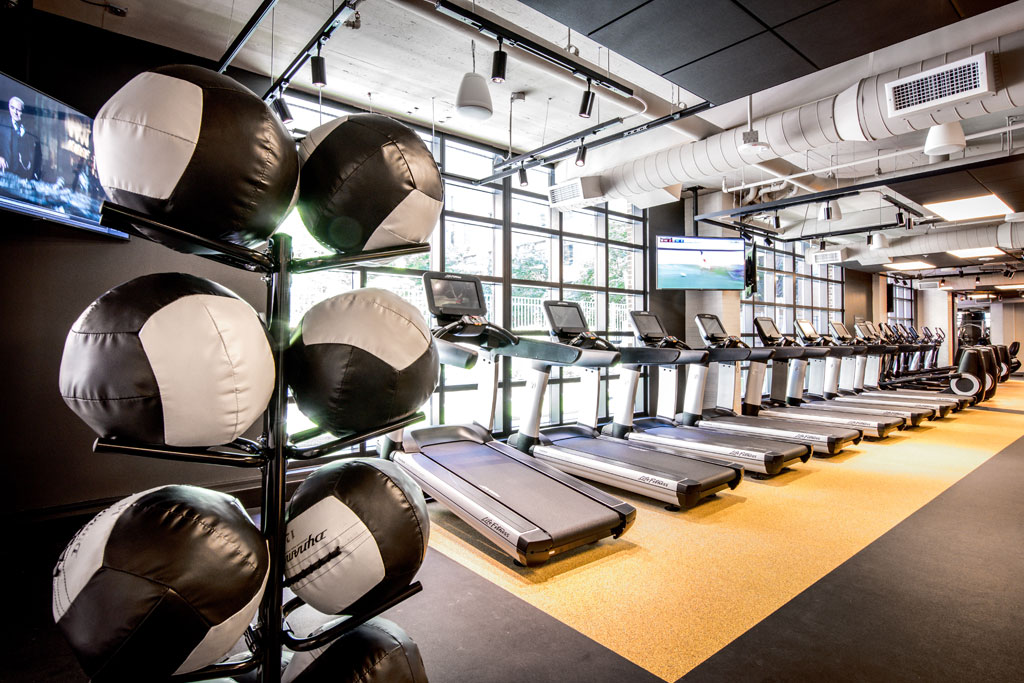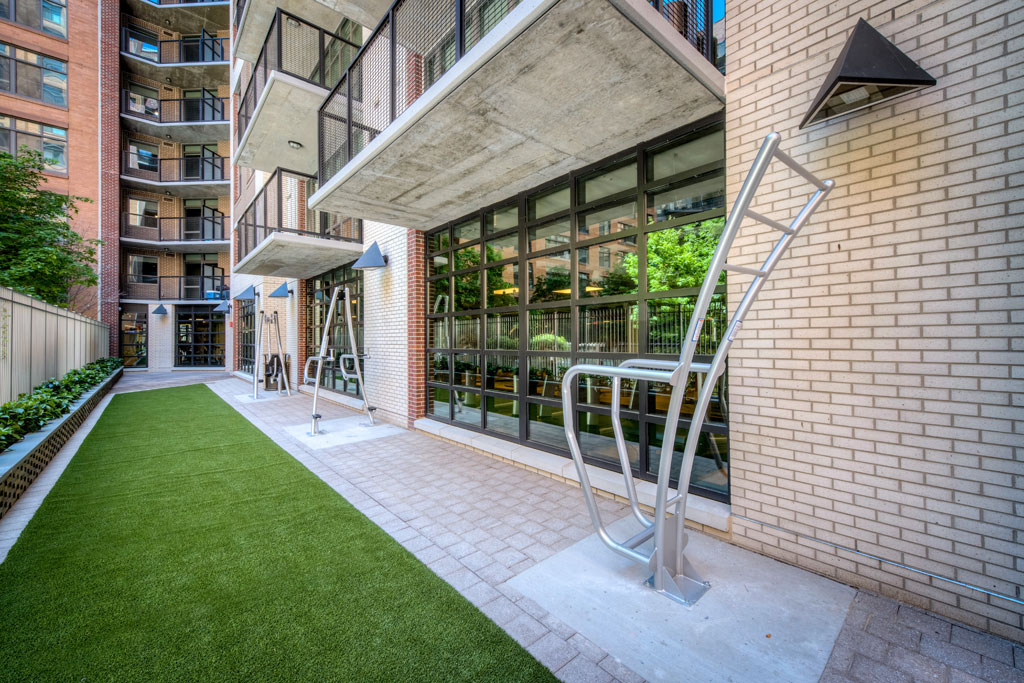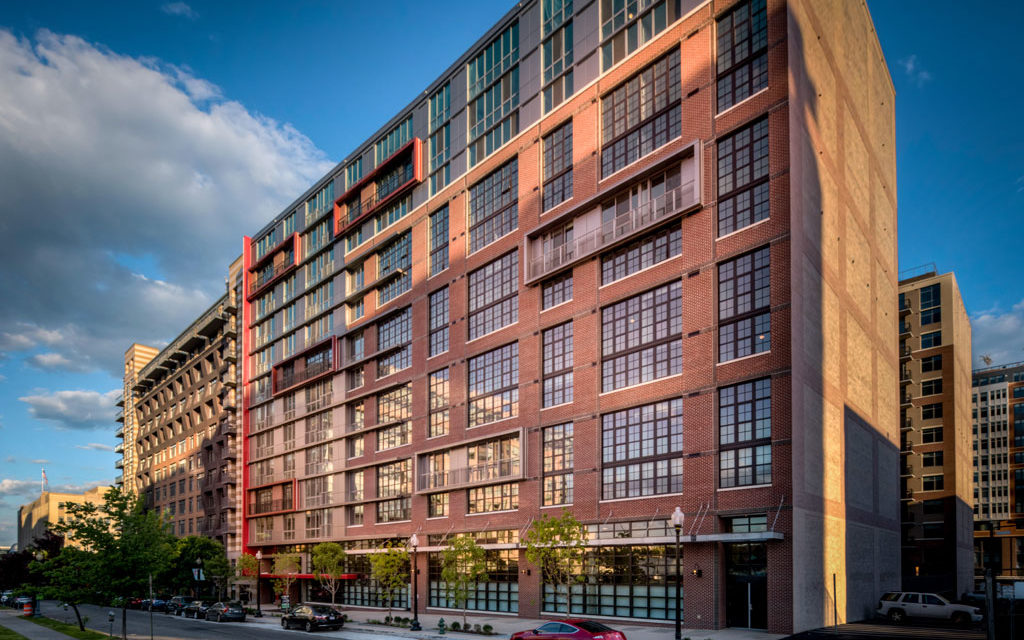AVA NoMa is the first multifamily residential building to achieve Fitwel Certification in Washington D.C., supporting the health of over 700 residents
November 12, 2018, WASHINGTON, D.C.— AvalonBay Communities, Inc., an equity REIT with a long-term track record of developing, redeveloping, acquiring and managing apartment homes in the U.S., has been awarded a Fitwel 1 Star Rating from the Center for Active Design (CfAD), for AVA NoMA, an apartment complex located in the NoMa neighborhood of Washington D.C. AVA NoMa successfully integrates evidence-based design and operational strategies that optimize the health of its over 700 residents.
Fitwel is the leading global health certification system evaluating evidence-based design and operational strategies in buildings that support human health. In November 2017, CfAD, the non-profit operator of Fitwel, expanded the certification system to include multifamily residential buildings—making it the only certification system to qualify access to Fannie Mae’s Healthy Housing Rewards financial incentive program for affordable multifamily properties, and welcomed AvalonBay as the first residential-only Fitwel Champion company.

Courtesy of AvalonBay Communities, Inc.
AVA NoMa, developed and managed by AvalonBay, is the first multifamily residential building in the District of Columbia to receive Fitwel certification. Consisting of 400 units across 12 floors, AVA NoMa is located in a highly walkable and transit-friendly neighborhood that is in close proximity to an array of health-promoting amenities, including the Metropolitan Branch Trail, an 8-mile planned walking/biking trail. In alignment with AvalonBay’s signature AVAfit program, the community includes a 24-hour fitness center for residents that features a yoga/spin studio with an on-demand fitness coaching system, TRX equipment, and an outdoor fitness area. Residents also have access to amenities that promote healthy eating, including a nearby full service grocery store and an on-site refrigerated drop-off area for fresh food deliveries. Each of the indoor common spaces within AVA NoMa connect to outdoor common spaces through operable overhead doors, allowing for access to fresh air and daylight for residents and visitors. Individual units also foster a healthy living environment through noise minimization, operable windows and/or balconies, and blackout shading.

AVA NoMA located in the NoMa neighborhood of Washington D.C. Courtesy of AvalonBay Communities, Inc.
“We are extremely pleased to have achieved our first Fitwel certification and the first in Washington, D.C., says Mark Delisi, AvalonBay Communities’ vice president of corporate responsibility. “We know our residents care about living in a healthy environment, and providing this at AVA NoMa shows our purpose of creating a better way to live encompasses healthy living, too.”
Fitwel Strategies implemented within AVA NoMa support the key risk factors for health outcomes, such as physical activity, healthy eating, and stress levels. Research[1],[2] shows that access to outdoor open spaces and nature encourages both social interaction and physical activity. According to the CDC, creating or improving access to places for physical activity can result in a 25% increase in the number of people who exercise at least 3 times per week.[3] Both extended and brief views of nature at home are associated with satisfaction, decreased levels of stress, and increased overall perception of health[4]. The demand for these types of features has grown as residents are increasingly seeking walkable homes that are supportive of their health. A report from the Urban Land Institute shows that 71% of homeowners report proximity to walking paths, sidewalks, and trails is an important factor when deciding where to live[5].

AVA NoMA located in the NoMa neighborhood of Washington D.C. Courtesy of AvalonBay Communities, Inc.
“Through AvalonBay’s Fitwel Champion commitment to implement Fitwel within their portfolio and today’s certification of AVA NoMa, AvalonBay is demonstrating its dedication to supporting the health of current and future residents of its multifamily communities, said Lisa Creighton, CfAD’s vice president of strategy and development. “We applaud their efforts to date and look forward to working with AvalonBay on future achievements.”
About AvalonBay Communities, Inc.
As of September 30, 2018, the Company owned or held a direct or indirect ownership interest in 290 apartment communities containing 84,490 apartment homes in 12 states and the District of Columbia, of which 19 communities were under development and 15 communities were under redevelopment. The Company is an equity REIT in the business of developing, redeveloping, acquiring and managing apartment communities in leading metropolitan areas primarily in New England, the New York/New Jersey Metro area, the Mid-Atlantic, the Pacific Northwest, and the Northern and Southern California regions of the United States. More information may be found on the Company’s website at http://www.avalonbay.com.
Fitwel and the Center for Active Design
Named one of Fast Company’s 2017 Top 10 Most Innovative Companies in Social Good, Fitwel is the premiere global health certification system for optimizing building design and operations. Generated by expert analysis of over 3,000 academic research studies, Fitwel is implementing a vision for a healthier future where all buildings and communities are enhanced to strengthen health and wellbeing. Fitwel was created as a joint initiative led by the U.S. Centers for Disease Control and Prevention together with the General Services Administration. The Center for Active Design, an international non-profit that uses design to foster healthy and engaged communities, was awarded the exclusive operating license in 2016 with the mandate to expand Fitwel globally to the private sector. More information is available at www.fitwel.org
Citations
[1] Cohen, D. A., et al. (2008). “The built environment and collective efficacy.” Health Place 14 (2): 198-208.
[2] Han, B., et al. (2014). “How much neighborhood parks contribute to local residents’ physical activity in the City of Los Angeles: a meta-analysis.” Preventive Medicine 69(Suppl 1): S106-110.
[3] Centers for Disease Control and Prevention. (2011). Strategies to Prevent Obesity and Other Chronic Diseases: The CDC Guide to Strategies to Increase Physical Activity in the Community. Atlanta: U.S. Department of Health and Human Services.
[4] Largo-Wight, E. (2011). “Cultivating healthy places and communities: evidenced-based nature contact recommendations.” International Journal of Environmental Health Research 21(1): 41-61.
[5] Largo-Wight, E. (2011). “Cultivating healthy places and communities: evidenced-based nature contact recommendations.” International Journal of Environmental Health Research 21(1): 41-61.





